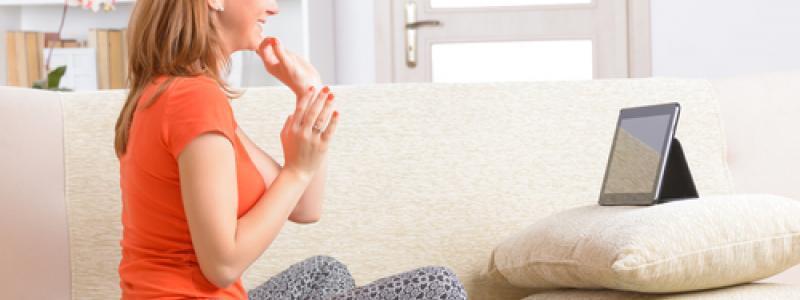iCanConnect: FCC’s Program That Supplies Comms Tech To The Deaf And The Blind

After almost half a decade in pilot form, iCanConnect, the program created by the Federal Communications Commission (FCC) to supply communications equipment to the deaf and blind in the United States is now permanent. Formally known as the National Deaf Blind Equipment Distribution Program (NDBEDP), it pledges $10 million in funding every year to local providers in order to make comms technology more readily available to deaf and blind users, especially with regards to how they can connect with their family and friends, and even in leading more independent lives.
Users who meet the income requirements can get equipment specifically manufactured to help maximize access to the information superhighway, telecoms and wireless services, and advanced communication systems, absolutely free of charge, plus support for training and installation. In every state in America, a single distributor will be certified by the FCC in order to supply the equipment and pertinent support services.
The program’s coverage has actually been extended to other US controlled territories, such as Guam, the Northern Marianas, and American Samoa. Previously in its pilot form, the iCanConnect program was already made available in all fifty states in America, as well as in DC, Puerto Rico, and the US Virgin Islands. According to the FCC, thousands of US users have already taken advantage of what iCanConnect has to offer.
After a recent ruling, the FCC has also expanded the requirements for mobile operators and manufacturers of hardware equipment in order to offer hearing aid compatible handsets. This is part of the agency’s effort to target full 100 percent compatibility across the board. Under this latest ruling, about two thirds of the a manufacturer’s models must be hearing aid compatible within the next couple of years, and that is increased to 85 percent within the next half decade. As for service providers, although they are offered the same benchmarks, they are given more time to meet the requirements. With the next eight years, the FCC is hoping to achieve 100 percent compatibility.
Users who are both deaf and blind typically make use of different modes of communications, including American Sign Language (ASL), spoken English, and Braille, plus of course, a wide range of communications technologies. Because of this, every individual has different requirements when it comes to equipment and support services. To make sure that each user gets the most appropriate equipment to their requirements, certified parties may get reimbursement, up to their yearly funding allotments, for the proper distribution of off the shelf and assistive equipment plus related support services, which may include evaluations, installation of equipment, and even training. Moreover, the FCC will also permit reimbursement to state programs for train the trainer efforts up to 2.5 percent of their funding allotments in order to address a common shortage of qualified personnel to train deaf blind people on how to operate the equipment handed to them.
Related Blog Articles
- 5G Roll-Outs Should Get A Boost With FCC’s Loosened Rules On Small Cells, DAS
- Verizon, AT&T Being Sued For Handing Discounts On 911 Charges To Business Customers
- Are Smartphones Making Soldiers Combat Ineffective?
- Google Looking To Test In 3.5 GigaHertz Band In Two Dozen Markets In The US
- Former Rovio CEO Named As New Marketing Head Of Nokia
- Alexa Now Helps You Find Your Misplaced Smartphone
- Is It Time To Bid Farewell To 3.5 Millimeter Audio Jacks?
- Unlimited Showdown: Sprint And T-Mobile Introduce Competing Unlimited Plans On The Same Day
- Tech Firms Team With The FCC To Combat Robocalls
- AT&T To Offer Roaming Access in Cuba
Related Blog Posts
- Report: AT&T facilities are used for NSA surveillance program
- Tips for achieving a smartphone detox this summer (or at least for a few days)
- Instagram hits 1 billion users; launches new IGTV video uploading service
- Facebook introduces game shows platform, with live interactive vids
- California Democrats combine two separate net neutrality bills


 Menu
Menu